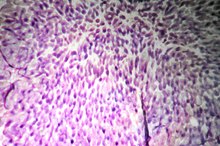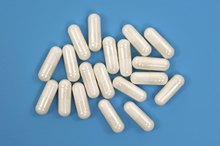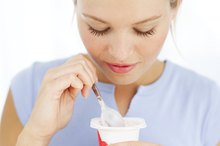List of Probiotic Bacteria
Probiotics are friendly bacteria that live in the intestines. Promoting healthy digestion and absorption of some nutrients, they act to crowd out pathogens, such as yeasts, other bacteria and viruses that may otherwise cause disease. Probiotics develop a mutually advantageous symbiosis with the human gastrointestinal tract. They benefit from the foods we ingest and our bodies utilize the byproducts of their life processes. Acidophilus is the most well known probiotic, but there are thousands of other strains that offer health benefits.
Lactobacilli
Lactobacillus acidophilus is the most well known probiotic and one of the most important for the health of the small intestine. Besides the linging of the intestine, Acidophilus can also take up residence in the vagina, cervix or urethra. Acidophilus inhibits pathogens, and produces such natural antibiotics as lactocidin and acidophilin, which enhance immunity. Acidophilus has anti-microbial effects against staphylococcus aureus, salmonella, E. coli and candida albicans.
Lactobacillus brevis, abbreviated L. brevis, is a lactic acid producing probiotic that is helpful in synthesizing Vitamins D and K.
L. bulgaricus, used in yogurt fermentation plays a protective role by producing lactic acid, which creates a friendly environment for other species.
L. plantarum makes lactolin, another natural antibiotic. Plantarum can also synthesize L-lysine, an anti-viral amino acid. This organism eliminates nitrate, promoting nitric oxide levels and decreases pathogens.
L. rhamnosus has a high tolerance to bile salts, surviving in less than favorable environments. This species has shown benefit to the elderly and infants alike. Rhamnosus helps with lactose intolerance, protects the small intestine, and produces lactic acid in the large intestine. Other strains of lactobacilli include L. fermentum, L. caucasicus, L helveticus, L. lactis, L. reuteri and L. casei.
Bifidobacteria
List of Good Bacteria
Learn More
Bifidobacterium bifidum is the most recognized of this category. Living within the mucus lining of the large intestine and/or vaginal tract, bifidum prevents pathogenic bacteria and yeast from invading. Bifidum creates favorable changes in pH levels by producing lactic and acetic acids. In addition, this species increase absorption of iron, calcium, magnesium and zinc.
B. infantis simulates the production of cytokines that affect the immune system, and can kill off such pathogens as clostrida, salmonella and shigella. B. longum colonizes the large intestine. It prevents unfriendly bacteria and yeast from taking residence. This can decrease the frequency of gastrointestinal problems, such as diarrhea, and nausea during antibiotic use.
Other Strains
Streptococcus thermophilus is another probiotic used to make yogurt. Breaking down lactose to create lactase, the enzyme that digests milk sugars, this species can help with lactose intolerance. Other Streptococcus strains include cremoris, faecium and infantis.
Enterococcus faecium has shown in studies to be helpful for diarrhea, shortening duration of symptoms. It kills pathogenic microbes, such as rotavirus. Studies have also shown this strain to lower LDL or bad cholesterol. This organism is very resistant to antibiotics. Although a transient guest, Enterococcus faecium is a welcome natural resident in the human body.
Related Articles
Writer Bio
Andrew Bennett enjoys exploring health and fitness through his personal workouts, as well as researching the latest about the subject. As a natural body builder, Bennett enjoys the ongoing pursuit of health and wellness in all aspects of life. He writes articles, blogs, copy, and even award-winning screenplays.









